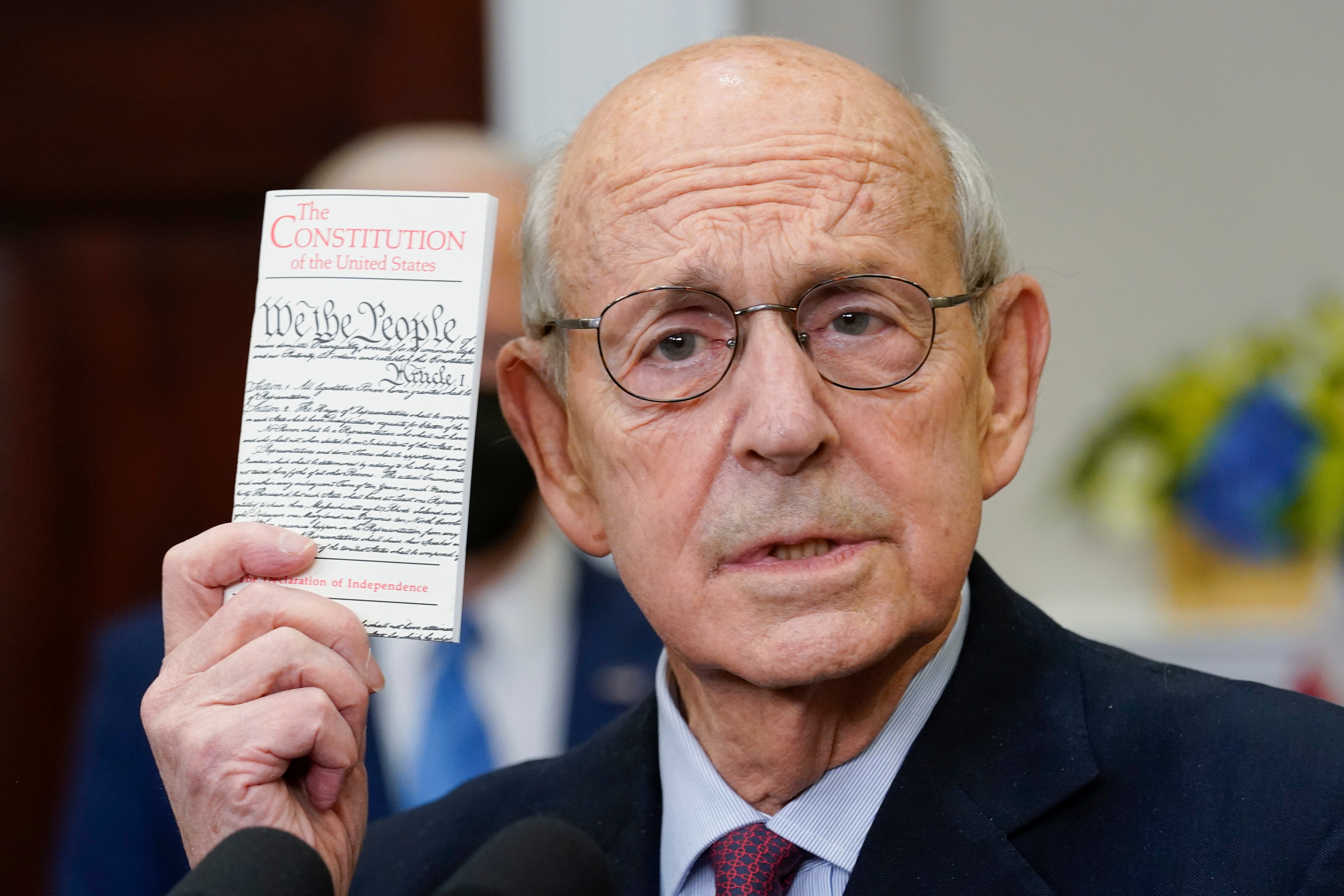When it comes to the US Supreme Court, who’s really ‘the best person for the job’?
Discussions surrounding Biden’s decision to appoint a Black woman to the highest court in the land have become heated, writes Phil Thomas


On the campaign trail, Joe Biden pledged to put a Black woman on the US Supreme Court if the opportunity arose. Now, with Justice Stephen Breyer announcing his retirement from the highest court in the land, Biden has confirmed he intends to do exactly that. The howls of outrage from the right are perhaps not surprising in this deeply partisan age.
As The Independent reported this week, Texas senator Ted Cruz went so far as to suggest that putting a Black woman on the Supreme Court was in itself an insult to Black women. Roger Wicker of Mississippi said Biden’s nominee would be the beneficiary of “affirmative action”, a policy the Supreme Court is itself considering.
The gist of most of the arguments is that Justice Breyer’s successor should be “the best person for the job”, irrespective of race or sex. To many, this sounds like code for... another white man, please.
There is a racial element to much of US politics, from the rules of the Senate – the filibuster developed as a way of blocking civil rights laws – to the voter suppression laws in the Deep South and elsewhere. Representation has long been an issue but its importance has come more sharply into focus in the wake of the Black Lives Matter protests in 2020.
There have so far been only two Black justices on the highest court in the land and just five women, out of a historical total of 115. Elsewhere in public life, the first Black woman to become a US senator, Carol Moseley Braun of Illinois, took her seat only in 1993. The third Black person elected to the Senate (and the fifth to serve) was Barack Obama. In fact, there have been just 11 Black US senators out of a total of 1,994. (There are currently three, one Republican and two Democrats.)
The number of Americans identifying as Black, meanwhile, is about 47 million, roughly the same number of people as the population of Spain. To misquote Martin Luther King Jr, the arc of the moral universe may bend towards justice, but it certainly is long.
Even without any racial element (and Mitch McConnell’s recent Freudian slip appearing to draw a distinction between “African Americans” and “Americans” doesn’t necessarily inspire confidence), the idea of “the best person for the job” is itself a fallacy.
There are 890 authorised judgeships in the federal system (most of them filled) – in other words, hundreds of senior judges who could potentially be someone’s idea of the “best person for the job” (not that the holder technically has to be a judge).
Beauty really does seem to be in the eye of the beholder. For Senate Republicans (then representing 48 per cent of the American public), Amy Coney Barrett was the best person for the job in October 2020. Democrats (at the time representing 52 per cent of the public) did not agree – but lost out as the GOP held the Senate majority at the time.
Republican opponents of Biden’s plan also conveniently forget previous presidents who have declared they wanted to increase representation on the court. Donald Trump said he wanted to appoint a woman as his third SCOTUS pick (and he did, Amy Coney Barrett). Ronald Reagan pledged to select “the most qualified woman I can possibly find” (Sandra Day O’Connor was the first of his four choices).
They may be in a minority in the media narrative but some senior Republicans are getting on board with Biden’s plan. South Carolina senator Lindsey Graham – an on-again-off-again Trump super-fan – bucked the trend by saying he supported the move, even going so far as to suggest a candidate from his own state, J Michelle Childs. “Put me in the camp of making sure the court and other institutions look like America,” Graham said. “You know, we make a real effort as Republicans to recruit women and people of colour to make the party look more like America.”
In less poisonous political times, more Republicans might follow suit. Not just because it’s a positive step for the United States, but because it might help attract back some of the centrist voters in the suburbs that Trump scared off, by toning down the racially charged culture wars and striving for a more representative society. The GOP look set to make gains in November’s midterms already – why not cast the net a little wider to be sure?
Before 2016, perhaps. But when much of the GOP can’t decide whether the US should be governed by an elected president or a power-grabbing would-be dictator, that might be a little fanciful.
Yours,
Phil Thomas
US assistant editor






Join our commenting forum
Join thought-provoking conversations, follow other Independent readers and see their replies
Comments